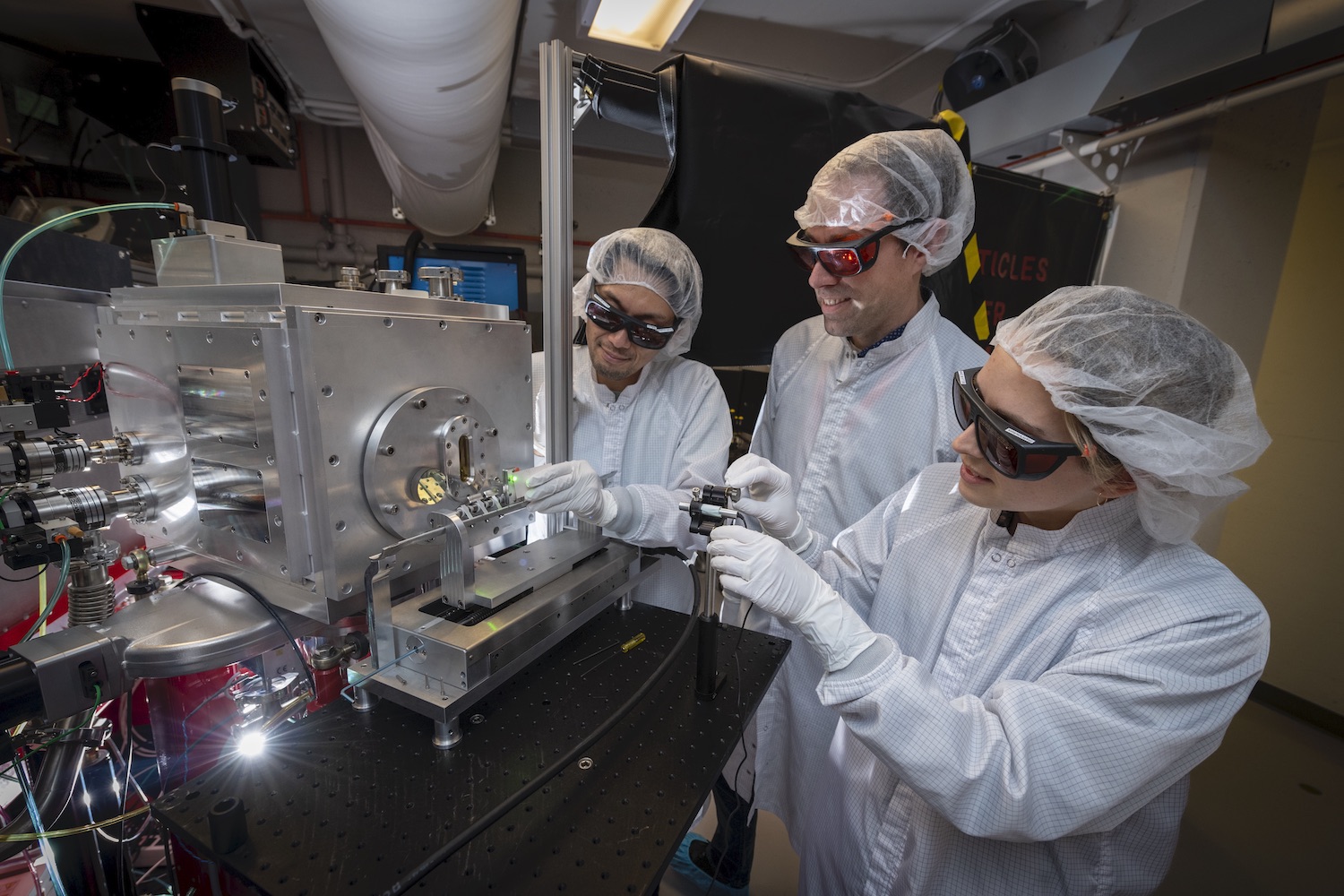Researchers in the Biological Systems and Engineering (BSE) Division are collaborating with colleagues at the Berkeley Lab Laser Accelerator (BELLA) Center to adapt the nascent technology of laser-driven ion accelerators to make a more effective type of radiation more readily available to patients. The mutually beneficial partnership gives BELLA scientists a real-world application around which to refine their experimental laser platform, and gives the biologists a chance to test how living tissue responds to laser-driven proton beams at FLASH dose rates.
Accelerated ions like protons deposit a low amount of energy in matter they encounter at the beginning of their path and a very high burst at the end, right before stopping completely. This phenomenon allows scientists to plot precise beam paths that deliver large radiation doses to tumors with minimal damage to the surrounding healthy tissue.
Currently, both conventional photon-beam and ion-beam radiation therapies administered at medical centers are powered by radiofrequency accelerators, which speed charged particles through a straight or circular vacuum chamber using electromagnetic fields and strong magnets. This requires massive infrastructure and beam delivery systems. “Proton therapy centers are large, expensive facilities, so they are limited around the world,” said Antoine Snijders, head of the BioEngineering and BioMedical Sciences Department in BSE.
Laser-driven proton accelerators work by pointing a high-powered laser at a thin foil, thereby generating a tiny region of plasma – a state of matter where atoms are stripped of their electrons – inside a vacuum chamber. In that plasma, strong electric fields accelerate protons and ions within a distance of a few microns. That means they can “offer acceleration in much smaller spaces than conventional systems and produce short intense pulses that create new opportunities for medicine and other applications, in addition to their promise for investigating fundamental physics,” said Cameron Geddes, Director of the Accelerator Technology and Applied Physics Division, home of the BELLA Center.
In addition, the scientists are investigating the potential benefit of using these accelerators to deliver proton beam radiation therapy at ultrahigh doses within extremely short exposure times – a technology called FLASH radiotherapy. In a paper published in Scientific Reports the team shared results from their proof-of-principle experiments on normal human cells and tumor cells. The work was the first to show that FLASH doses can be delivered by laser-driven accelerators, and it demonstrated that these radiation bursts resulted in higher survival of normal cells compared with cancerous cells.
Read the press release in the Berkeley Lab News Center.




